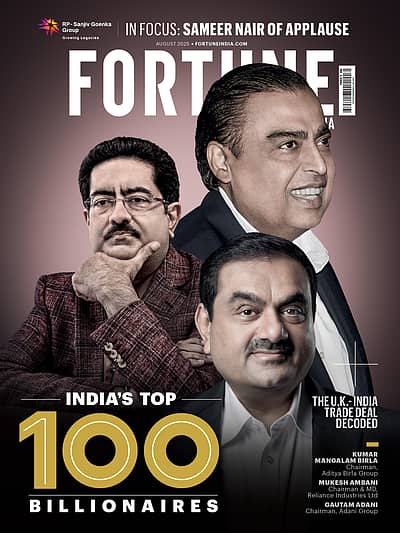Auto industry capex to rise over 30%: Crisil
ADVERTISEMENT

Automakers in India are expected to bear a total capital investment, or capex, of about Rs 58,000 crore over the next two fiscals, according to recent findings released by credit rating and research agency Crisil on Monday. The study revealed that the capex is expected to rise over 30% by 2020 as compared to the preceding two fiscals.
The survey was conducted on 18 original equipment manufacturers (OEM) of commercial vehicles (CV), passenger vehicles (PV), and two-wheelers that form nearly 90% of industry volume.
Capex is the money spent by a business on acquiring or maintaining fixed assets such as land, buildings, equipment, etc. PV makers will account for almost 70% of this capex, while CV manufacturers will have a 20% share, leaving the balance 10% for two-wheeler manufacturers.
August 2025
As India continues to be the world’s fastest-growing major economy, Fortune India presents its special issue on the nation’s Top 100 Billionaires. Curated in partnership with Waterfield Advisors, this year’s list reflects a slight decline in the number of dollar billionaires—from 185 to 182—even as the entry threshold for the Top 100 rose to ₹24,283 crore, up from ₹22,739 crore last year. From stalwarts like Mukesh Ambani, Gautam Adani, and the Mistry family, who continue to lead the list, to major gainers such as Sunil Mittal and Kumar Mangalam Birla, the issue goes beyond the numbers to explore the resilience, ambition, and strategic foresight that define India’s wealth creators. Read their compelling stories in the latest issue of Fortune India. On stands now.
India’s OEM space is largely duopolistic, with the top two players in each segment enjoying nearly 60-70% market share. They are expected to incur more than half of the total capex in each.
The higher capex for the next two years is driven by healthy demand prospects and regulations, Crisil said in its study. Despite sizeable funding requirements for capex in the next two years, Crisil expects the credit quality of rated OEMs to remain stable, supported by strong cash-generating ability, well-maintained balance sheets, and promoter support.
“About half of the Rs 58,000 crore would be to expand capacity to cater to growth in demand, and the balance for new products and technology to conform to tighter regulations. Vehicle demand is expected to grow in most segments in high single digits till fiscal 2020, supported by rising disposable incomes and increasing industrial and rural activity,” said Anuj Sethi, senior director, Crisil Ratings.
Crisil also expects many new model launches—around eight major ones in the PV segment in 2019—and an increase in investment in product development, including EVs, necessitated by intense competition.
Crisil expects the credit quality of rated OEMs to remain stable, supported by strong cash generating ability, well-maintained balance sheets, and promoter support.
Fortune India is now on WhatsApp! Get the latest updates from the world of business and economy delivered straight to your phone. Subscribe now.
